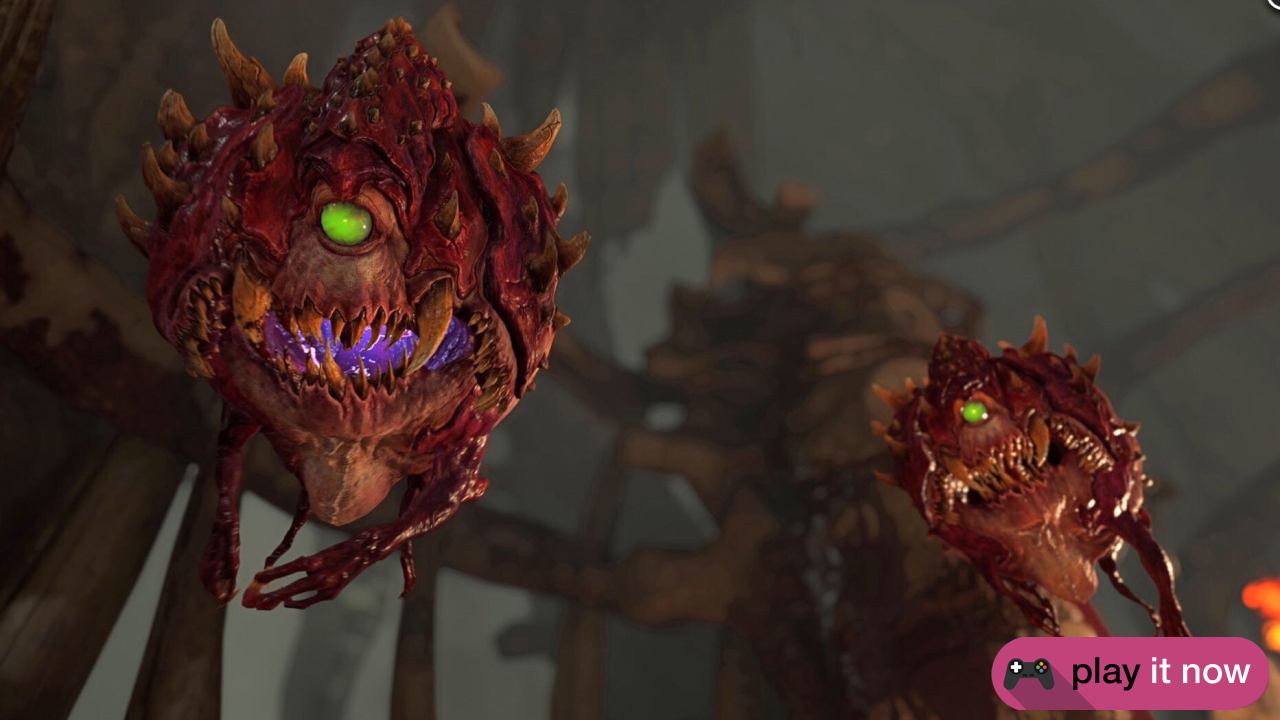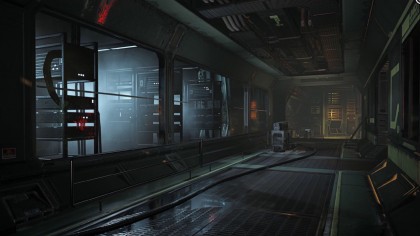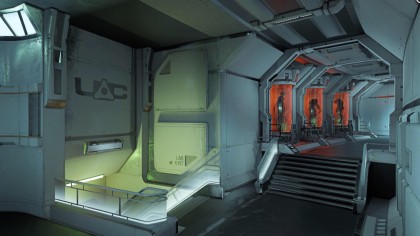Doom review
A potent cocktail of retro and modern

Id software's Doom combines a retro focus on killing hellish demons with some smart modern additions that manage to keep the game feeling fresh without making it feel bloated. It's not a reinvention of the genre like the original Doom was, but just a few key tweaks to the existing formula mean that Doom is a tight, fast, fun experience throughout.
The result is a game that will see your trigger finger getting plenty of use throughout its surprisingly lengthy runtime without too many breaks for modern touches like character or plot development.
This might make it sound as though Doom is a shallow game, but it's hard to emphasise just how right the core shooting feels. Every gun has its use and every enemy is unique. Doom doesn't need a big intricate story to feel complete, it knows its strength is in its shooting, and it's aim is preventing anything else from getting in the way.
It's a shame that the game's multiplayer doesn't get this mix of old and new right in quite the same way though. Here the traditional elements of arena shooters and modern progression systems grate rather than complement, creating an experience that manages to feel bloated and yet completely shallow.

All the single playaz
Thankfully Doom's single-player portion is meaty enough to stand on its own without the need for multiplayer. The campaign sees you, playing as the unnamed 'Doom Guy', attempting to close a portal to hell that an evil futuristic mega-corporation has opened.
The story is completely insane and barely makes sense. Characters appear without any real introduction, the reasoning behind the whole 'portal to hell' thing is never fully explained, and I was never really clear on my overall mission objective.
It's reassuring then that Id seems to have realised that Doom's attraction is not in its story, rarely interrupting the action to deliver a plot point to you. Instead the majority of Doom's story is kept to codex entries, which keeps them nice and optional if you want to focus on the action.
Get daily insight, inspiration and deals in your inbox
Sign up for breaking news, reviews, opinion, top tech deals, and more.
Action guy
When it gets going, Doom's action is fast, frantic and fun, but it certainly doesn't start out that way.
The beginning of the game sees you start out with a low-powered pistol, facing off against crowds of weak enemies. The pistol isn't a fun weapon to use, and the sheer number of enemies mean that you're over-exposed to a central element of the game called 'glory kills', where you finish off an enemy with a brutal melee attack.
These glory kills end up being a fun addition to the formula. Using them nets you health and ammo, which encourages you to get up close and personal with your enemies rather than picking them off from a distance. They encourage you to have more fun with the way you approach gun fights.
Initially though, you're using these glory kills so often that they really impact the flow of the action. The game turns into a rush to melee kill your next opponent rather than facing them as a group.
This changes as the game progresses. You start fighting off against a smaller number of more high-powered enemies, and in this setting the glory kills feel like a satisfying end to a fight rather than an interruption to its flow.

So too does the game's pistol give way to higher-powered much more fun alternatives, with interesting secondary fire functions that diversify the gunplay. Killing a room full of enemies with a pistol is boring; killing them with a combination of shotgun, machine gun and plasma rifle is infinitely more fun as you juggle your weapons to make the most of your position within the map.
I have no idea how Id has managed it, but it has seemingly found the ideal level of ammunition to give to the player. It was never scarce enough that I felt the need to ration my bullets, but I ran out often enough that I could never rely on just a single weapon for the entirety of a fight.
The combination of this along with weapons upgrades that are in part unlocked by using the weapons in certain ways means that the game subtly teaches you how it wants to be played. I normally like to play our first person shooters cautiously, but Doom encouraged me to get stuck into the action and use my full arsenal for every fight.
Making the chainsaw a secondary weapon that can be easily switched to mid-fight also encouraged me to use it, unlike in most other shooters where melee weapons remain firmly sheathed for the majority of the experience.
Doom is ultimately a game that's all about its shooting, and when it gets this core component as right as it does it's hard to care so much about some of the game's obvious problems.
One-note thrills
Doom does its gunplay well, but its efforts to diversify the experience have mixed results.
The original Doom games featured wide open levels that involved a certain amount of exploration in order to find the door keys you needed to progress, and 2016's Doom takes this a step further with the inclusion of hidden upgrades and collectables that reward your exploration.
Some of the upgrades later in the game enhance your ability to find these secret areas, meaning that finding everything the game has to offer doesn't have to be a case of painstakingly trawling through every dark corner of the map.

Less successful is the game's attempt at platforming segments. The respite these afford from the endless combat is certainly welcome, but they can be occasionally frustrating when it's not obvious how far your invisible-legged protagonist can jump.
It's a shame that, while graphically technically impressive, the game's visuals underwhelm. The environments might go from dark corridors to the martian surface to hellish landscapes, but it all ends up looking very dark and uninteresting.
To its credit, the game maintains a rock solid 60fps throughout on PS4 (Digital Foundry found it sold on Xbox One too) despite multiple enemies and particle effects being on screen, but there was never a moment when I felt the need to stop and admire my surroundings.
It's not enough to sour the single-player experience, but it's clear that Doom's strongest suit is its combat.
Jon Porter is the ex-Home Technology Writer for TechRadar. He has also previously written for Practical Photoshop, Trusted Reviews, Inside Higher Ed, Al Bawaba, Gizmodo UK, Genetic Literacy Project, Via Satellite, Real Homes and Plant Services Magazine, and you can now find him writing for The Verge.
